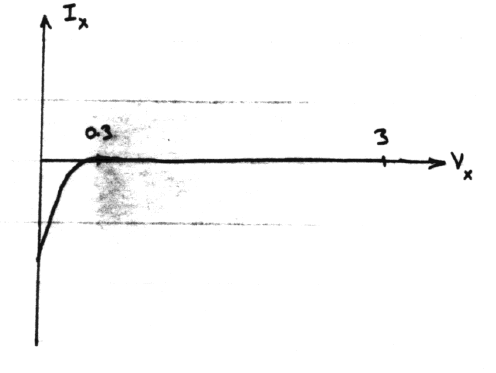I am currently studying the basics of CMOS design and came across the following problem in Razavi's textbook with respect to a NMOS transistor :
The question is simple:
Let \$V_{SB}\$ = 0 (source-bulk). The voltage \$V_X\$ is swept from 0 to 3V and it is asked to plot the curve \$I_x\$ x \$V_x\$. Channel-length modulation effects are ignored for simplicity and the threshold voltage \$V_{TH}\$ = 0.7 V
The answer graph, found in a hand-written solution manual has the following shape:
\$\textbf{My questions is}\$: How can M1, which is always under the \$V_{GS}\,< V_{TH}\$ rule (since \$V_{GS} = 1 - 1.9 = -0.9 < V_{TH} = 0.7)\$ conduct current?
I know CMOS technologies allow for a symmetric transistor thus letting current flow from source to drain and vice-versa, however I wouldn't expect current to flow when \$V_{GS} < V_{TH}\$.
Any help will be appreciated.


